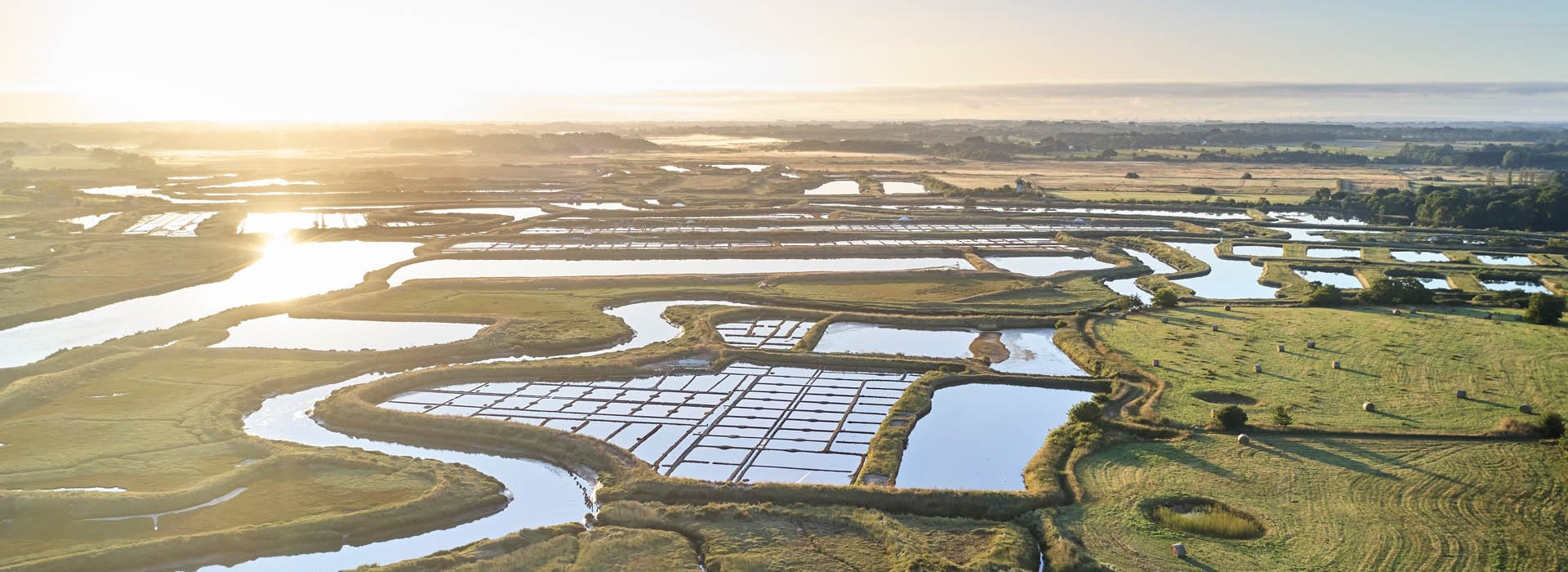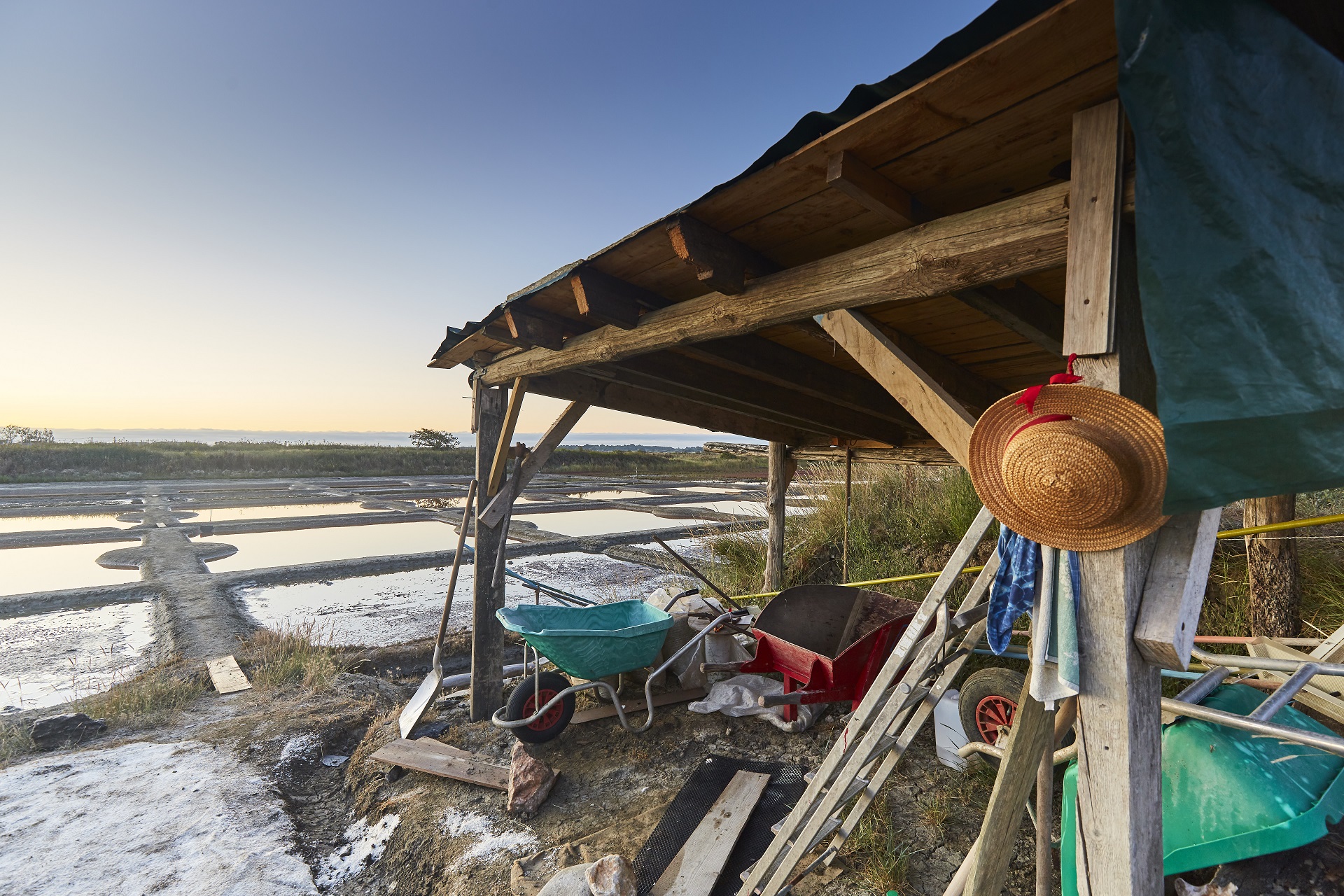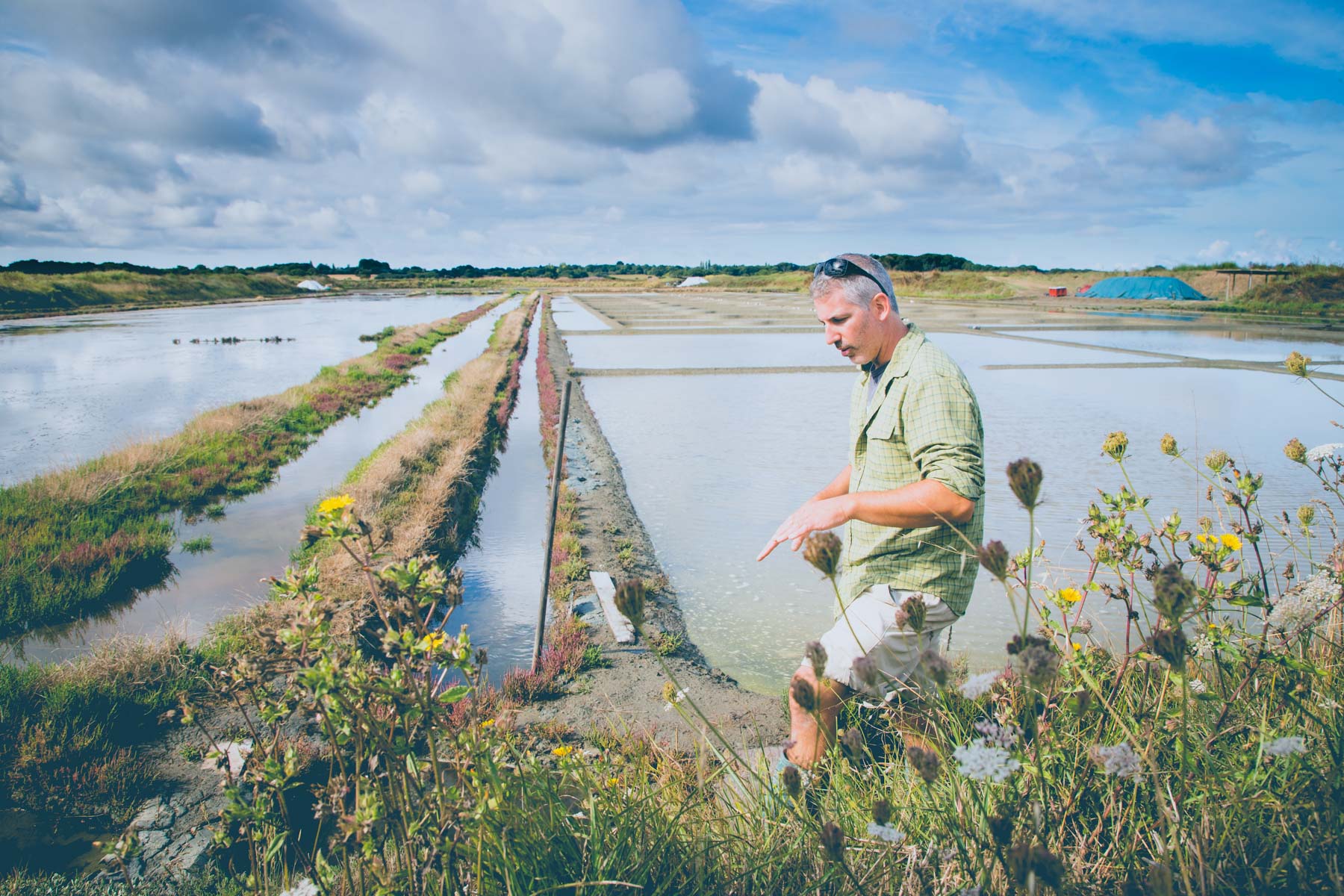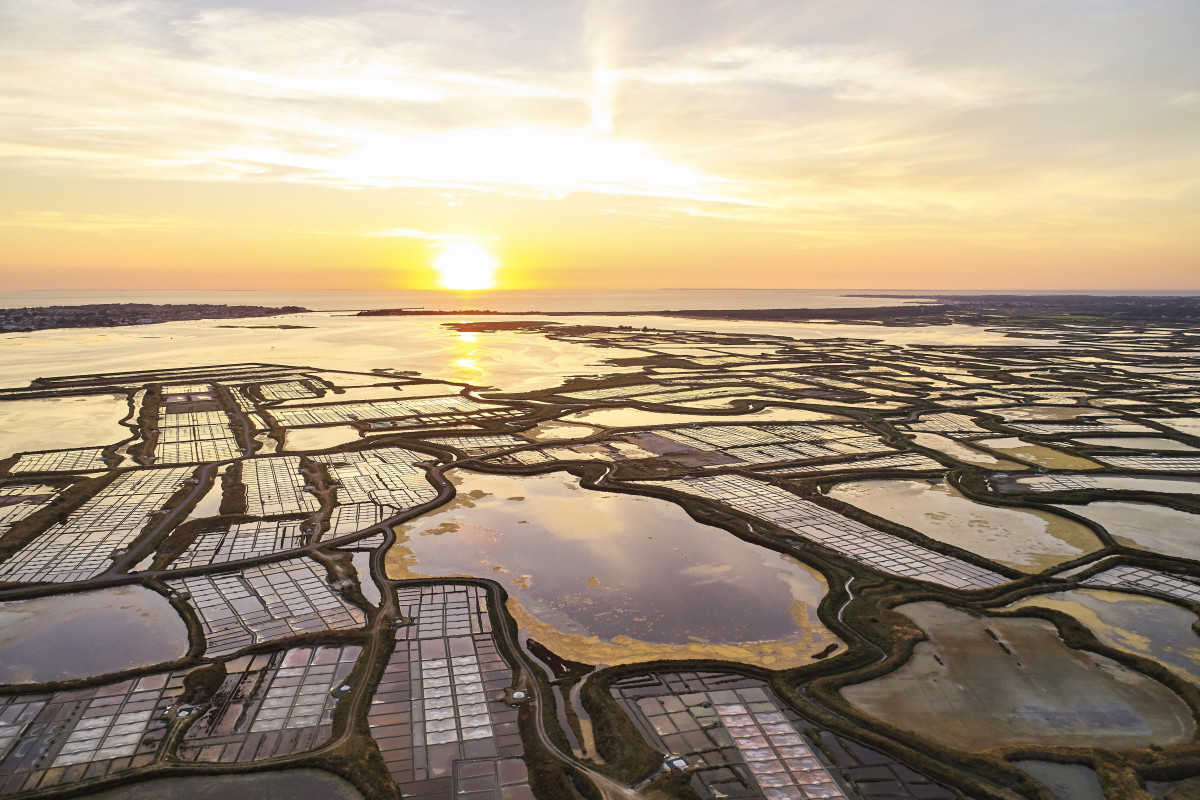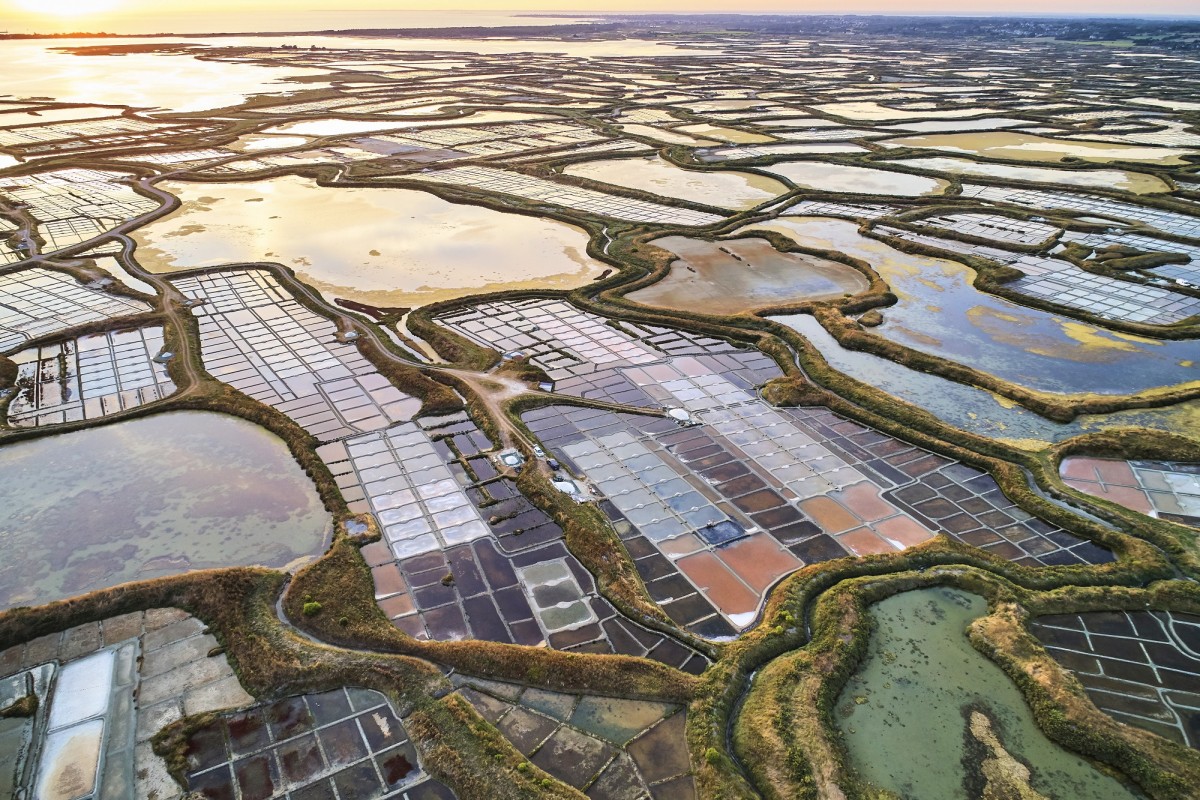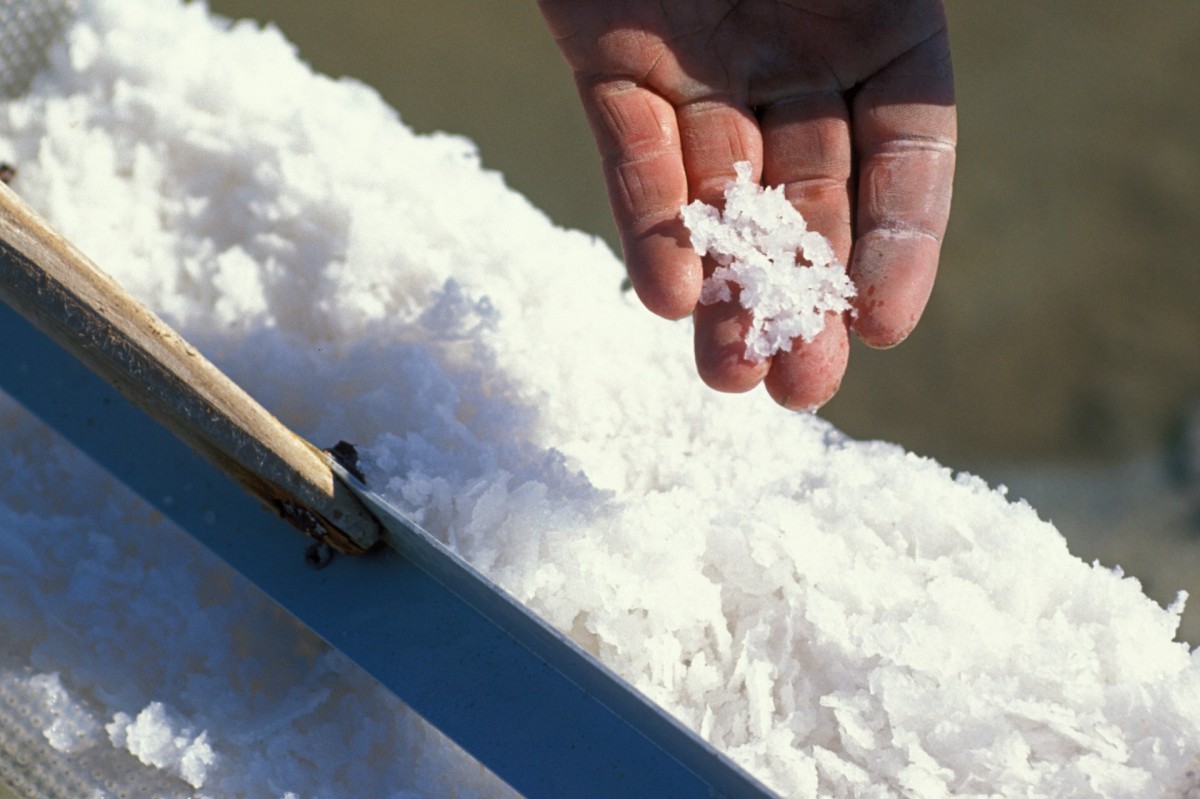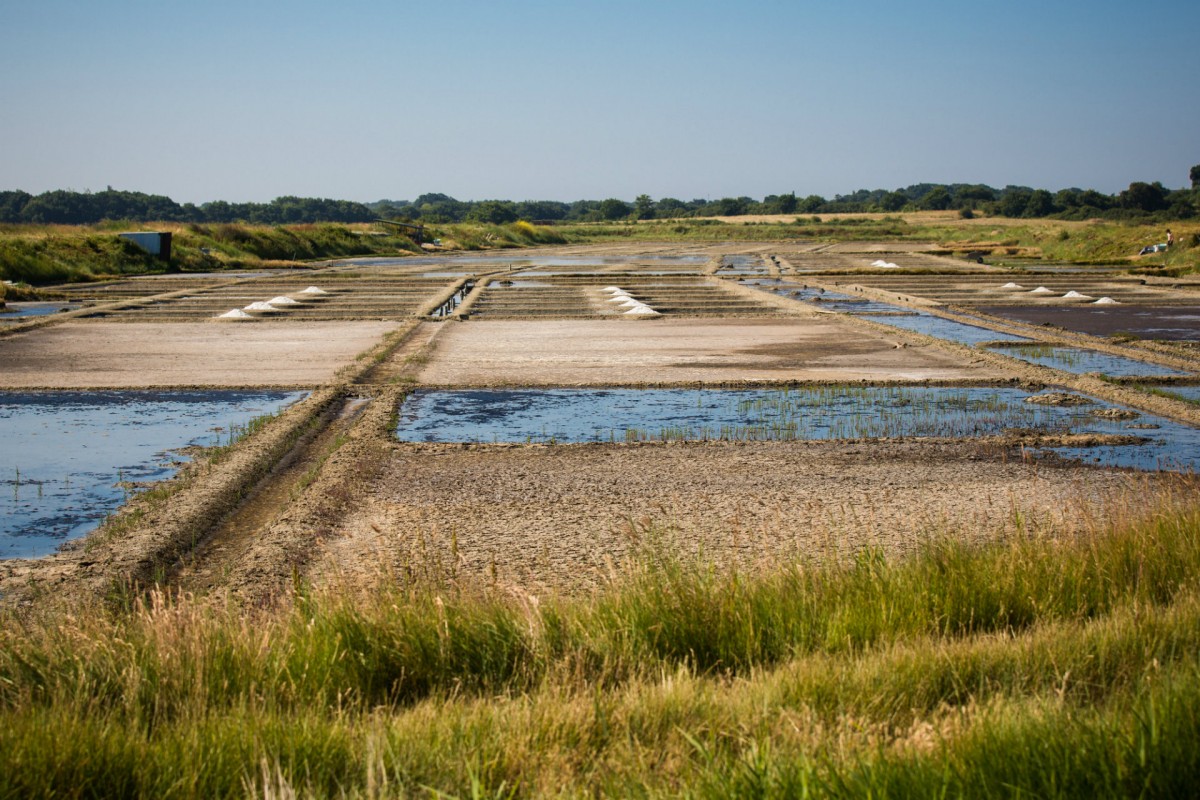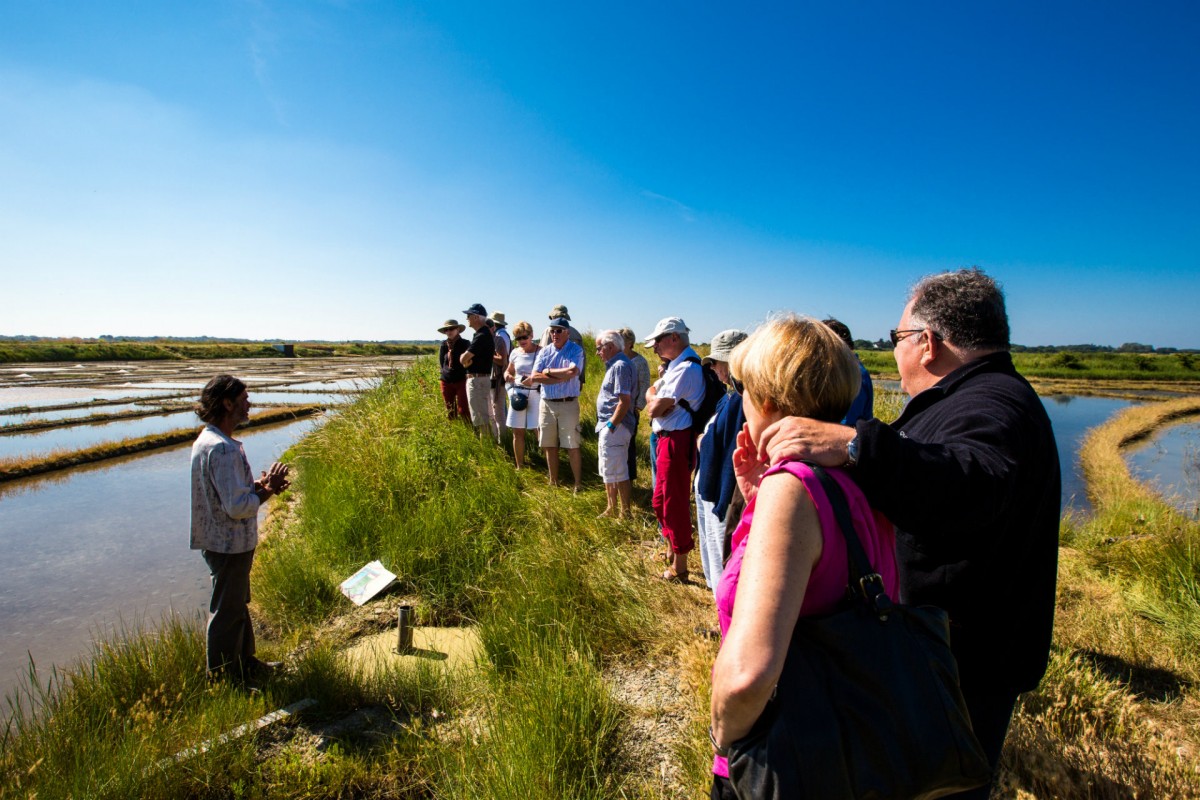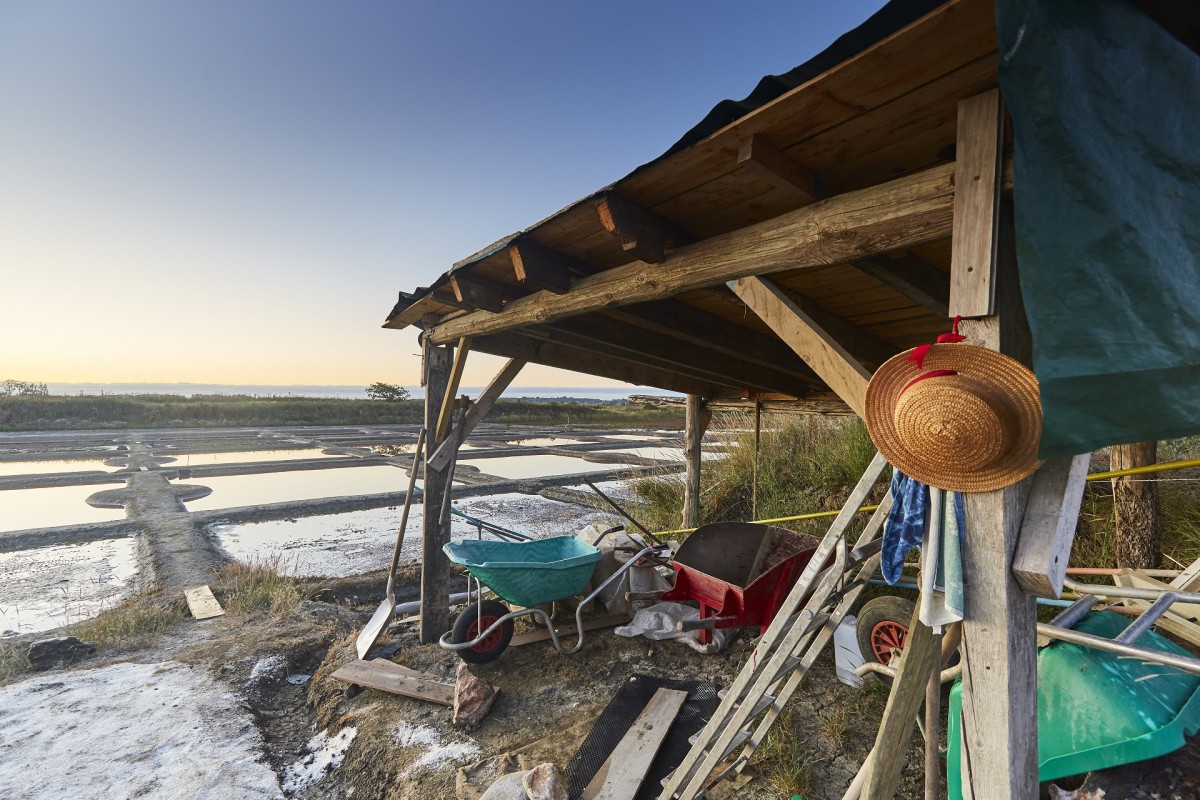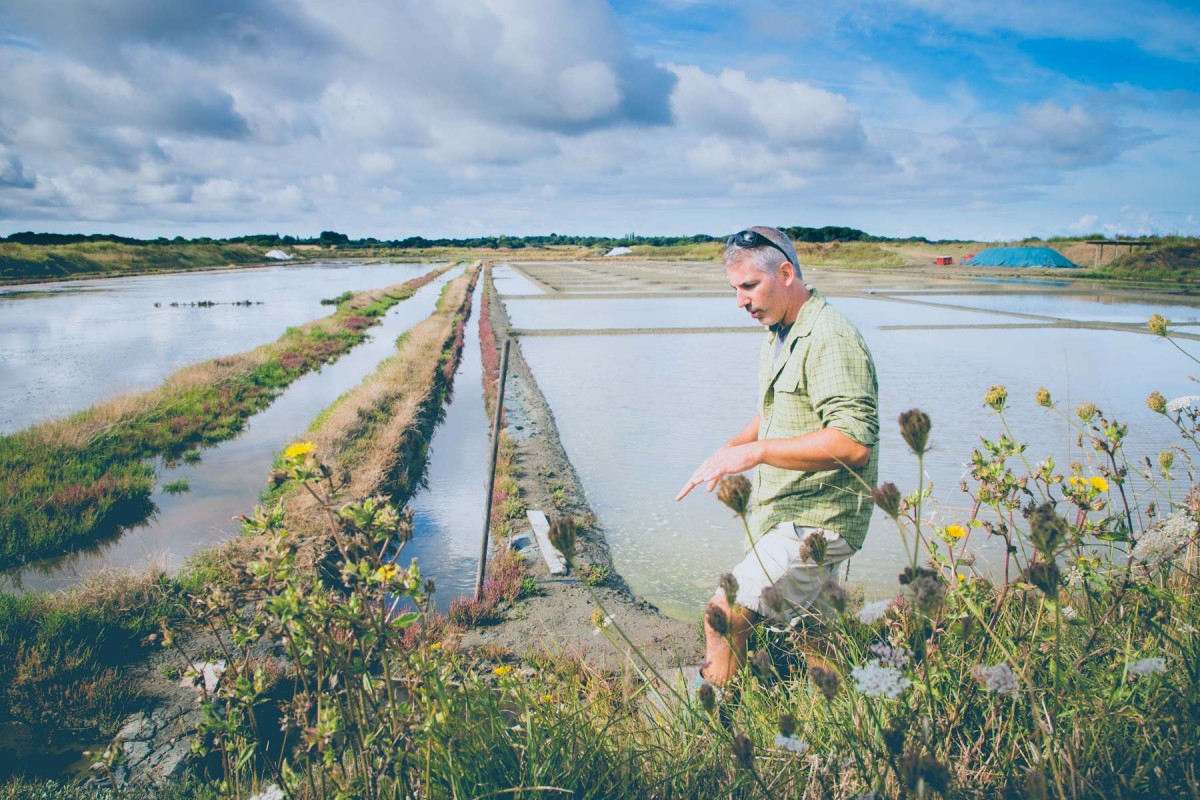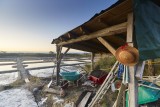'Le Bassin du Mès' in St Molf : 140 hectares of salt marshes
The salt marshes of Le Mès, which lie beyond the hillside near Guérande, cover an area of some 350 hectares in/and around Mesquer-Quimiac, Saint-Molf and Assérac. This zone is supplied with seawater via the inlet of Le Traict de Mesquer.
The salt marshes architecture
In the heart of the salt workers’ villages such as Saint-Molf, the history of the salt trade has also had its hand in fashioning the houses. The landscape of the salt marshes is liberally dotted with ‘salorges’, and paludiers’ traditional houses with their coloured woodwork and slate roofs are also a characteristic feature of the landscape.The former salt warehouses, with their unique shape form an imposing feature of the local landscape. These salt storehouses known as ‘les salorges’, became more common in the second half of the XIXth century springing up near to the railway lines and farms. These imposing granite buildings with their large buttresses and slate or tiled roofs are still very much present today.

